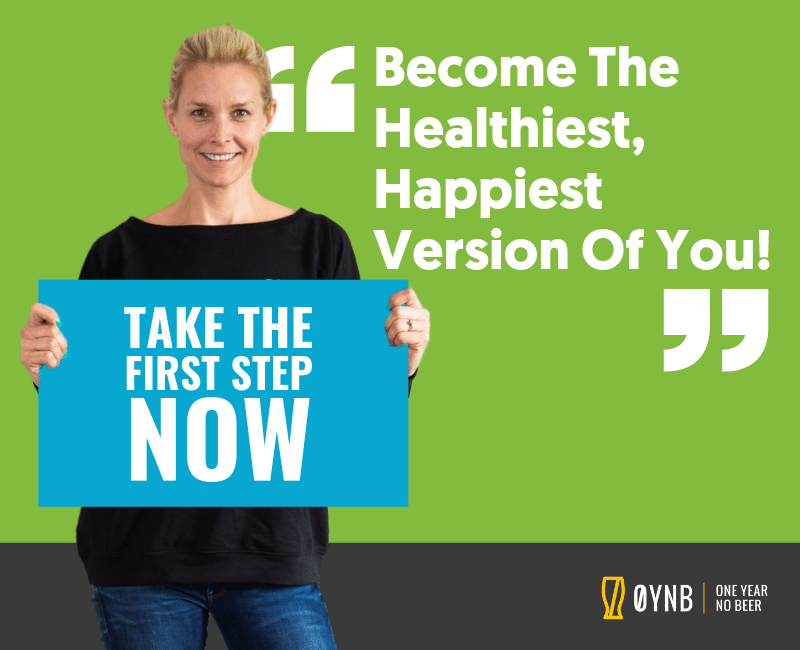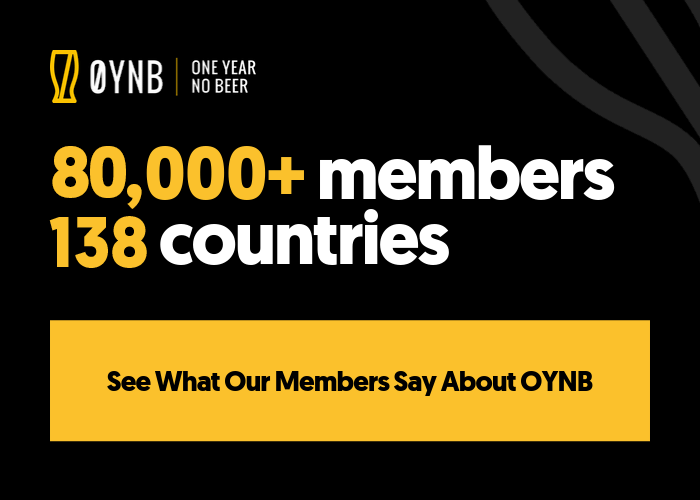How to use meditation to stop drinking
Meditation helps to build a gap between a stimulus and a response so when faced with a trigger, you have the time to make a conscious decision rather than the instant response of drinking alcohol.
As a wellness journalist and author, yoga and mindfulness teacher, if I know one thing by now for sure, it’s that meditation is great for us, and we should all be doing it, in this blog post I will guide you through how to use meditation to stop drinking. And after writing about it for seven years, and dedicating two years of my life (so far…) to study it, I could break the internet (and probably your boredom threshold) with the number of fascinating studies on how it helps us live better, fuller, happier, healthier lives.
You might have heard a few of these benefits before; that meditation has the power to reduce stress and anxiety, improve sleep, and increase our general health.
And that’s all true, backed by science. But did you also know that meditation has been found to increase intelligence, including in children of all ages. Transcendental (mantra) meditation has been found to improve marital relationships, and personal relationships at work and socially too, and it has also been found to help in pregnancy, and to create glowing skin, through its reduction of stress and balancing effect on hormones.
Meditation myths
So meditation is good for us – now we know how. I also mentioned that we should all do it. But I often hear two responses to that statement. The first is ‘but I don’t know how’, and the second is ‘but I can’t do it properly’. And I understand how that feels.
Many of us, on hearing the benefits of meditation, decide to give it a go only to find that it’s actually really difficult to sit in silence with our mind and just ‘empty’ it. Firstly, that’s not surprising; we spent the last few decades, aka our whole lives, using our minds to think, and then we expect ourselves to just turn them off. It’s equal to asking ourselves to not chew when we eat food – we’ve spent our lives building the habit, and also, just as our mouths are designed to chew our food, our mind is designed to process thoughts; that is the mind’s function.
Which leads me nicely to my second point – we sit down to meditate, try to clear our mind, find it’s impossible and… then proceed to beat ourselves up. Neither of these things are mediation. When we meditate, we don’t aim to clear the mind, but rather, to observe it, and we aim to do this, without judgement or self-criticism, but instead with kindness and compassion.
 How to meditate: A beginner’s guide
How to meditate: A beginner’s guide
Let’s go into that a little deeper into out how to use meditation to stop drinking guide. When sit to meditate, the aim is to simply observe the mind as it thinks – taking notice of each thought as it enters our mind, and then consciously letting it go, rather than getting carried away by it, into the future or the past. I like to think of it as watching a blue sky as floating balloons drift past. Each balloon represents a thought. Now and then we might grab a string and pull a balloon down, and when we do that we can no longer see the sky, because our whole attention is filled by that one balloon (or thought).
The trick to meditating is here: when we become aware that we are holding the balloon, (without berating or judging ourselves for grabbing it) we can then choose to let it go and watch it drift away. Another balloon (thought) might come along just as quickly as we let that one go, but that’s ok. We just acknowledge it, and allow it to float away into the distance. After some practice, we might find that we tend to grab the balloons that float by less and less, and maybe even eventually, that the sky is filled less with floating balloons in general, and that we have more periods of open blue sky with little or no balloons/thoughts.
But if this never happens, we are still meditating. There is no goal to meet, nothing to achieve or attain. Just observation. Some days there will be more balloons/thoughts than others. And some balloons/thoughts will be more tempting, even impossible not to grab, for example, if they are highly charged or they mean a lot, such as a thought about getting made redundant at work. And that’s ok. Compassion is key; it’s not really about whether we grab for the balloons or not, it’s what we do with them when we’ve grabbed them. The real magic in meditation is found in that moment of awareness that we have grabbed at one – that we are caught up in a thought, and in letting that balloon/thought go with kindness, compassion and non-judgement towards ourselves for having been caught up in it!
 What will work for you?
What will work for you?
Some people like to use anchors in their meditation to help them to have something to focus on, so that they can return and ‘anchor’ their attention once they realise they have become caught up in a thought. By keeping our awareness on the anchor, we stay in the present moment, and away from our thoughts about the future or the past, which can cause us stress and anxiety.
Some people use the breath, some people use sounds. Others use body scan meditations, scanning down their body and noticing physical sensations without judgement, used in mindfulness for practicing acceptance and also in yoga nidra to help aid sleep. Others might use mantra chanting, music, or even visualisation, such as chakra breathing. Some people simply sit in silence and observe their thoughts.
No one style of meditation is better than another – although they can be used to put an intention on a specific focal point, for example a self-love or self-compassion meditation, a gratitude meditation, an acceptance meditation, or even to help practice being with difficult situations or sensations in a safe and dedicated space, as taught in an 8-week mindfulness course.
Finding the right style for you is simply a matter of preference and personality. If you are more scientific, mindfulness meditation might feel right to you. If you are more spiritual, yogic mantra and chakra meditations might fit better, or like me, you might love them all and like to keep it varied dependant on your state of mind each day! If you don’t like or can’t feel into one style, try another; each practice is like a chocolate in a selection box – you’ll probably like some more than others, and you might as well try a few!
Practice makes perfect
Meditation takes practice of course, just like any new skill; playing an instrument or learning a new language. The skill must be repeated, and as we repeat it, new neural pathways in the brain and built and strengthened, and over time we become better at it. This serves us in our meditation, because it means that over time we become better at slowing down, stepping back and observing our thoughts, being in the present moment rather than the anxiety and stress of the past and future. Ultimately it helps us learn to respond to life, rather than react to it, a tool that serves us in so many situations in life.
Ali Roff is Wellness Director at Psychologies magazine, a yoga teacher and mindfulness meditation expert for health and stress.
 My 3 favourite meditation apps to help you stop drinking
My 3 favourite meditation apps to help you stop drinking
-
Calm
With more than 10 million downloads it’s easy to see why people love Calm so much. It’s a beautiful space to spend time in. You choose your goals – perhaps improved focus, increasing happiness, better sleep, developing gratitude, or simply learning to meditate. You get meditations, but also music tracks, masterclasses and even gorgeously produced sleep stories read by the likes of David Walliams.
-
The Mindfulness App
On opening this app it asks you to take a deep breath – and immediately you bring yourself to the moment and feel lighter. Never underestimate the power of one singular conscious breath! For beginners and experienced meditators alike, it starts with a 5 day guided introduction to mindfulness meditation, aimed to help you create a routine for your practice so that you can feel the long term benefits. The amount you practice and when is up to you – just choose in the settings and you’ll get a lovely little reminder. There are themed meditations for whatever you’re looking for, from sleep, to travel to focus or stress relief, and lots of fantastic teachers to practice with.
-
Insight Timer
From meditation courses, to discussion groups, to meditations, recorded talks and lectures and the wonderfully useful timer, this app allows you to be supported in many different ways along your meditation journey, but also begin to go off and practice on your own with the help of a timer – but not just any old timer. This one has the option of a choice of start and end singing bowl bells that take me right back to my Buddhist mindfulness and yoga retreats – adding that element of authenticity and setting off intention. You can also choose an ambient sound to accompany your solo meditation, and interval bells to let you know where you are in your meditation without having to disturb yourself by checking the clock.
One Year No Beer helps people change their relationship with alcohol and one way you can start doing that today is through meditation. Let us know if you enjoyed our guide on how to use meditation to stop drinking.

An entrepreneur and former senior oil broker, Ruari gave up drinking after excessive consumption almost cost him his marriage, and worse, his life. Going alcohol-free improved his relationships, career and energy levels, leading to him founding OYNB to provide a support network for others.


 How to meditate: A beginner’s guide
How to meditate: A beginner’s guide What will work for you?
What will work for you? My 3 favourite meditation apps to help you stop drinking
My 3 favourite meditation apps to help you stop drinking



